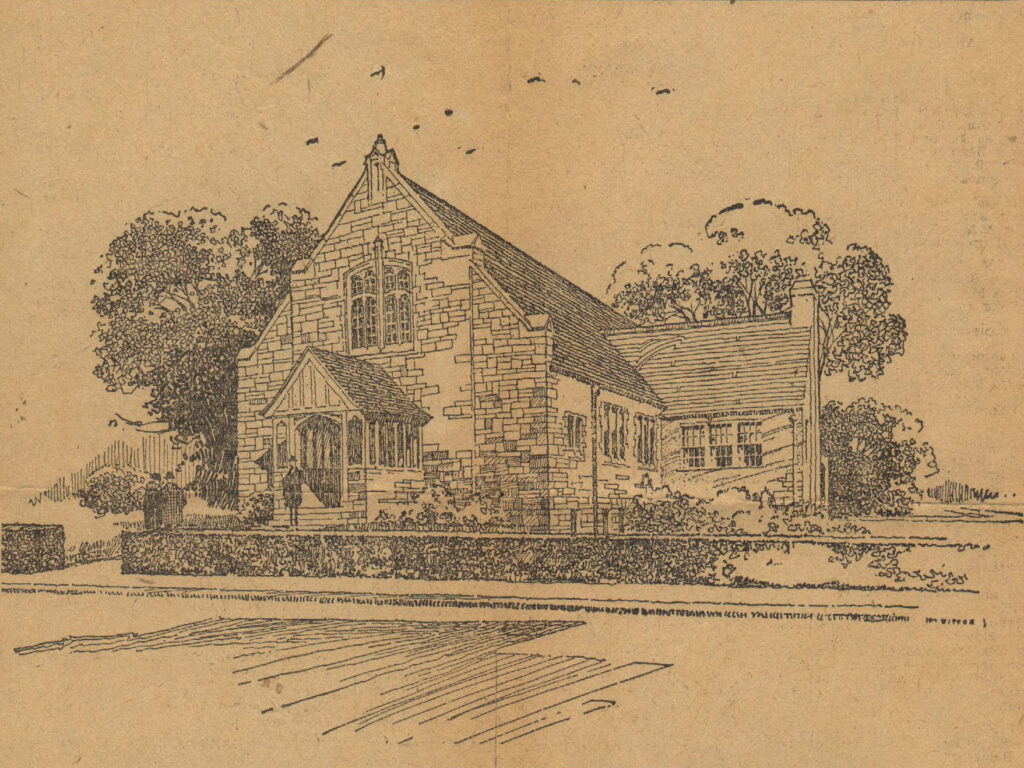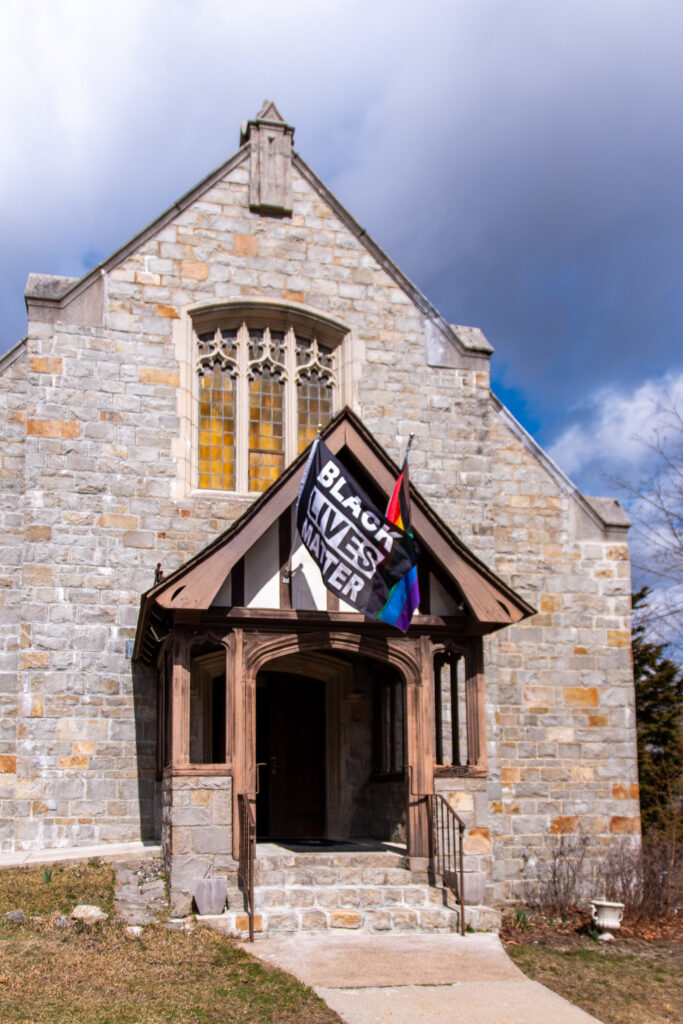Reading, MA — The Unitarian Universalist Church of Reading is joyously celebrating the 100th anniversary of the first service held in its 239 Woburn St. sanctuary on March 23, 1924.
As the Chronicle reported on March 28, 1924, “The seating capacity of the [new Unitarian] church was filled, and chairs had to be brought in.” With its carved oak chancel furniture and “light from the leaded window above,” the Chronicle pronounced the sanctuary “light, cheery, homelike and comfortable in its appointments” and added that “the acoustic properties are entirely satisfactory.”

The church itself–finished in 1923 after the congregation had left their previous building in Reading Square several years earlier– was said to be “architecturally worthy…constructed of light-colored Weymouth stone and stucco in modified Gothic style” (Boston Evening Transcript, May 26, 1923). If 1920s congregants were to return, they would find the front of the church quite familiar–only that the church is now Unitarian Universalist and flies both the Progress Pride and Black Lives Matter flags from its front portico.
When the new building was built, the congregation’s mission was to be a “community church–a house of prayer for all people; non-creedal; non-sectarian, inclusive in fellowship, progressive in policy, neighborly in spirit, [seeking] to serve the community in the Christ[ian] spirit of goodwill, and [inviting] the co-operation of all people to this end, regardless of creed or sect affiliation” (notice published weekly in the Chronicle’s church news).
Central to the church’s welcome was Community Hall. The congregation’s vision that the space would truly be a gathering spot for the community got off to an auspicious start: the March 28, 1924, Chronicle reports that in the previous week, 47 young people stayed for the social hour after the Young People’s Vespers; the Young People’s Religious Union held a “dancing party” (about 100 attending); a Boy Scout troop met (30 boys and 10 instructors and visitors); a Girl Scout troop met (15 members); and the Laymen’s League Chapter 81 met “to organize the Chapter and make it an efficient men’s organization for church work.”

Today, UUCR continues to be an inclusive and progressive church, with its mission stating that UUCR is a welcoming place to nurture and explore individual spirituality, build a committed and loving community, and help heal the world. There have been significant changes since 1924: the American Unitarian Association and the Universalist Church of America merged in 1961, becoming Unitarian Universalism. And the faith continues to grow and change: after adopting 7 Principles and 6 Sources of Faith in 1985, the denomination is set to vote on newly structured shared Unitarian Universalist values in June 2024. These values include Interdependence, Pluralism, Justice, Transformation, Generosity, and Equity, with Love at the center.
As the church’s minister, Rev. Dr. Laura Solomon, notes, “As in 1924, UUCR strives to be a welcoming community, as seen in its ongoing work of welcome and justice. The Progress Pride flag and Black Lives Matter flag seen flying over the Woburn St. doors symbolize the congregation’s ongoing commitment to the work of love and justice.”
